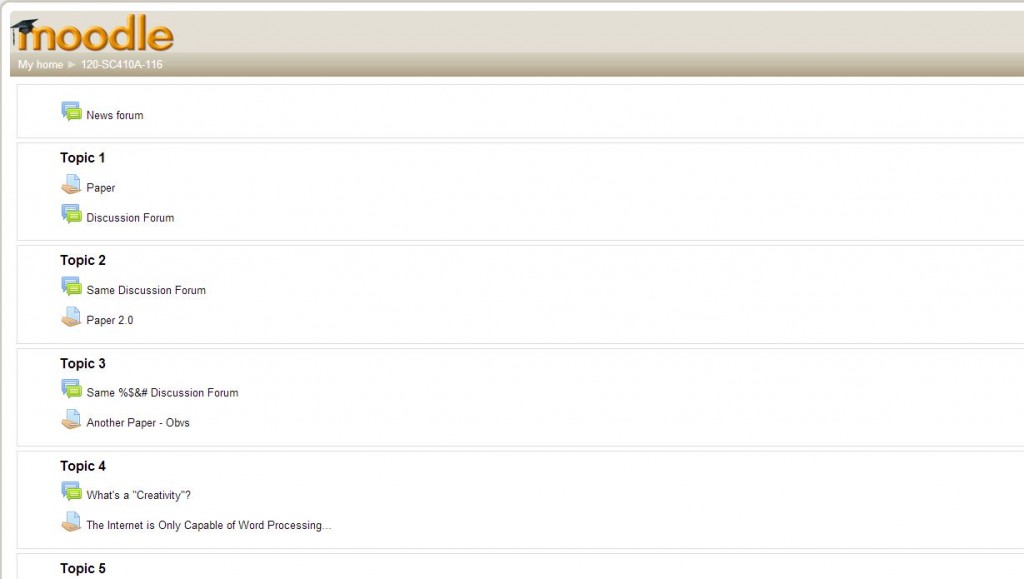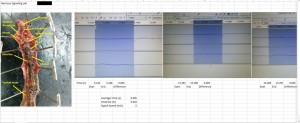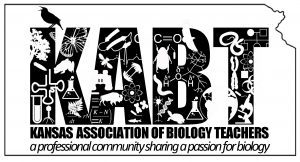Flipping and Going In Circles
Moving student learning out of the classroom will require better formative measures of competency and content acquisition.
Summer is the time for reflection in the life of a teacher. This year I stumbled upon something interesting; I found myself at a nexus of several teaching styles:
- I teach a general biology course in a traditional time-allocation model.
- I teach an AP Biology course with significant aspects of a flipped classroom.
- I teach a Biotechnology program that is primarily student-directed.
- I participate in a master’s program that is 100% online learning.
In having access to a representative cross section of the current time-usage models, I noted that the primary struggle in moving learning outside the classroom walls and into a flipped or online model is continuing to obtain evidence of student learning without regular direct student interaction.
Assessment is Hard.
At first this observation is not particularly noteworthy, because all teachers must measure student learning frequently. Informal assessment of student progress occurs constantly in a traditional classroom. Bell work assesses retention from previous lessons. Prelabs assess existing knowledge and preparation for an experience. Teacher monitoring and student conversations provide information on class progress during an experiment. Summative tasks such as writing samples and future applications provide guiding information moving forward.
The problem in moving to a flipped classroom or an online class (which is really just flipping a classroom 100% of the way) is losing access to all of the easiest methods of assessment. Bell work is no longer sufficient for assessing extended learning occurring since the last meeting. Informal conversations provide some information, but are not enough evidence alone to ensure an activity occurred outside of class time. This leads to some of the greatest complaints from students in online/flipped environments.
If a Student Learns Alone in an Empty Room, Does She Make a Sound?
Online classes are notorious for superficial assignments, rote repetition, and unbalanced workloads. These problems arise as supervisors clamor for evidence to support grades. A professor or teacher can show a dozen forum posts about inquiry as evidence the students learned about inquiry. The difficulty, as any teacher can tell you, is learning requires more interaction with the material than simply making required posts on a topic.
It seems too many flipping teachers are relying on superficial tasks (read-quiz-repeat or two-dozen-papers-done) because the most valuable learning behaviors are difficult to measure. A class can read a passage and have a meaningful discussion and a teacher can know those things happened because they witnessed them in a room. How else can you ensure such behaviors happened online without required forum posts? As a result, online or heavily flipped classrooms revert to all the same learning behaviors seen in classrooms 100 years ago.
This problem leads to lots of “evidence”, but little legitimate learning! We must as teachers have the courage to provide tasks to students that promote critical thinking and student ownership, and spend our time finding measurements that are strong evidence of a learning trajectory to reach a single point, rather than many superficial measurements along a linear path.
Do Digitize Strong Practices, Don’t Force Digital Practices
The solution to real online learning is two-fold: make quality classroom experiences accessible to students alone at home, and measure their competency on those tasks after-the-fact.
The first struggle is one not easily solved. There exists an experimental design course in my master’s program, and I dreaded this course. I didn’t fear it for difficulty, but for quality. How could forum posts alone help me refine my experimental design skills at a graduate level? The answer was the obvious one, it couldn’t. Our professor was very clear, we will be designing our own experiments at home and reporting our results. I know other teachers in virtual environments tackle the same problems. For teachers looking to flip our classrooms, we must be brave enough to create authentic tasks for our students to tackle on their own.
I would argue the best way to accomplish this is to identify the most fertile areas for flipping. Prelab work and readings are obvious, but lab work can also be done at home at times. Don’t flip your electrophoresis lab, but flip the prelab preparation so they can ensure they can run their gels long enough in class. Don’t flip your photosynthesis lab by making it a dry lab over break, flip it by finding a new way to measure photosynthesis progress like biomass accumulation in various amounts of shade or temperature. Don’t skate around the problems by simply providing tasks that are easy to design, get creative and solve the REAL problem. Eliminate the busy work and allow more time for your students to focus on what’s left.
The second issue is evidence for the final course marks. Half this problem is solved with quality flipped tasks. The observation I would make is that we must find ways to take measurements that provide greater description for past learning. A forum post is a fairly superficial measurement at face value. A photo diary of the experimental process provides the same verification of an activity, but cuts the extraneous time investment to a minimum. A well-crafted graph can be reported which provides evidence of data collection and analysis in a product that can be rapidly evaluated by the teacher. The ultimate message is, “Increased workload does not a rigorous course make, and often it is its undoing.”
Michael Ralph is a teacher making mistakes at a prodigious rate in the hopes he will run out of errors sometime before he retires. He’s also tweeting more now @ralph0305.


